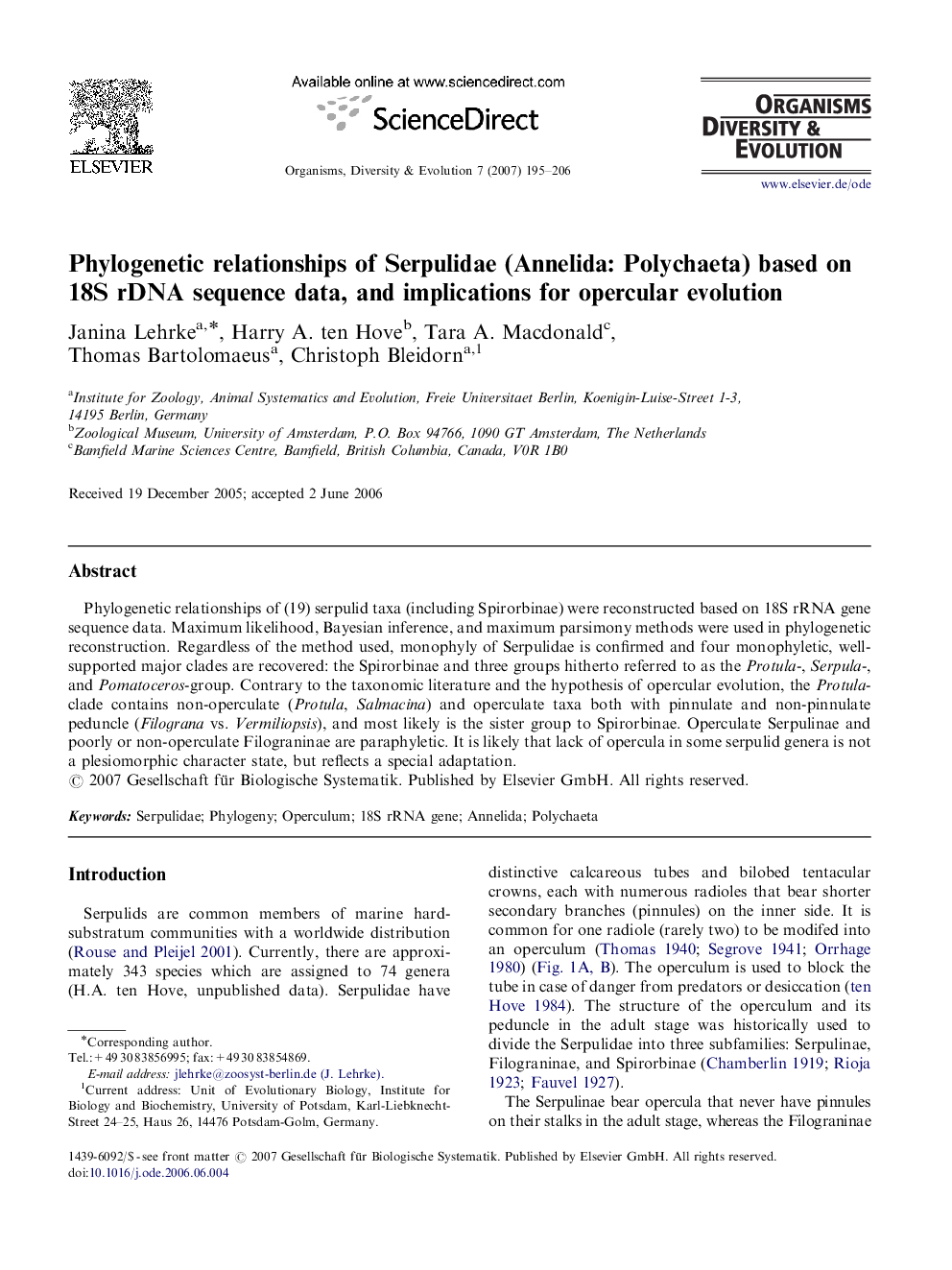| Article ID | Journal | Published Year | Pages | File Type |
|---|---|---|---|---|
| 4458708 | Organisms Diversity & Evolution | 2007 | 12 Pages |
Phylogenetic relationships of (19) serpulid taxa (including Spirorbinae) were reconstructed based on 18S rRNA gene sequence data. Maximum likelihood, Bayesian inference, and maximum parsimony methods were used in phylogenetic reconstruction. Regardless of the method used, monophyly of Serpulidae is confirmed and four monophyletic, well-supported major clades are recovered: the Spirorbinae and three groups hitherto referred to as the Protula-, Serpula-, and Pomatoceros-group. Contrary to the taxonomic literature and the hypothesis of opercular evolution, the Protula-clade contains non-operculate (Protula, Salmacina) and operculate taxa both with pinnulate and non-pinnulate peduncle (Filograna vs. Vermiliopsis), and most likely is the sister group to Spirorbinae. Operculate Serpulinae and poorly or non-operculate Filograninae are paraphyletic. It is likely that lack of opercula in some serpulid genera is not a plesiomorphic character state, but reflects a special adaptation.
